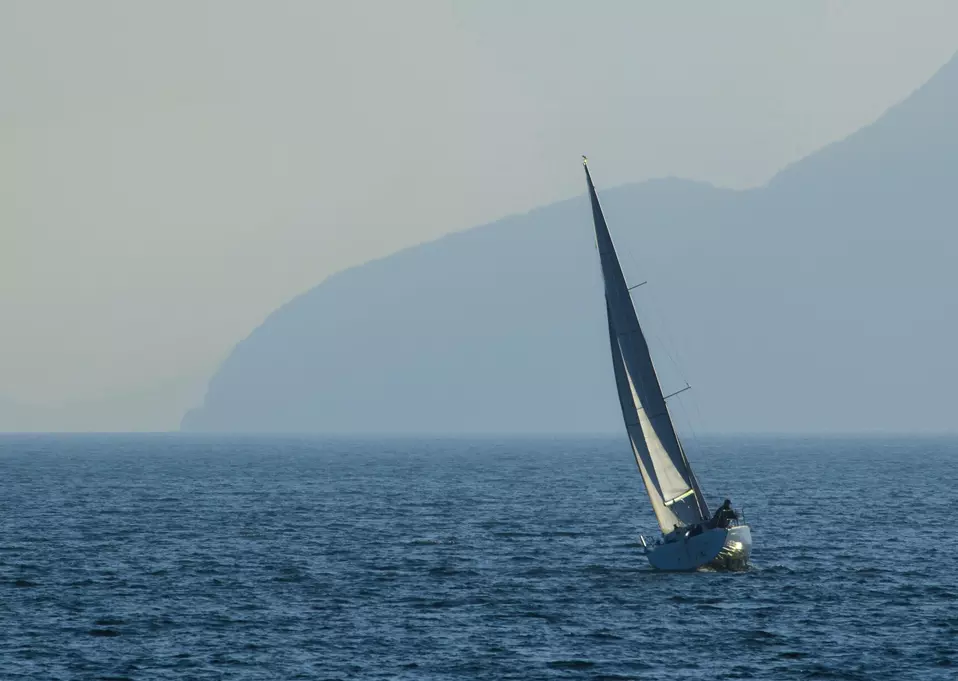
Sailing in Northern Sardinia is an extraordinary experience, thanks to its crystal-clear waters, breathtaking bays, and a variety of wind conditions that make every journey unique. However, knowing the predominant winds of the area and understanding how to best manage your sailing boat is essential to ensure both safety and enjoyment. Here is a practical guide to dealing with the main winds of the region and sailing at your best.
The Winds of Northern Sardinia
Mistral
The Mistral is the dominant wind in northern Sardinia. Blowing from the northwest, it can vary in intensity from 15 to 40 knots and often lasts for several consecutive days. When strong, it generates significant waves and can make sailing challenging.
To handle it best, it is important to carefully plan your route, seeking shelter in more protected bays such as Cala Corsara or Porto della Madonna in the Maddalena Archipelago. Reducing the sails helps maintain stability and control, opting for a smaller headsail and a reefed mainsail if necessary. If the wind is particularly strong, it is preferable to avoid long crossings in open sea and choose coastal navigation instead.
Grecale
The Grecale blows from the northeast and, although less frequent than the Mistral, can create challenging conditions, especially in open water areas between Sardinia and Corsica.
When sailing with the Grecale, it is advisable to pay attention to shallow waters and narrow passages, such as those in the Maddalena Archipelago, where the wind can intensify. Ensuring that the anchor is well secured is essential, preferably on sandy bottoms for better holding. Additionally, sailing with a beam reach or broad reach allows you to take advantage of the wind without putting too much strain on the boat.
Scirocco
The Scirocco wind, coming from the southeast, generally brings warm and humid air. It can generate long waves and rough seas, particularly on the eastern side of Sardinia.
To handle it best, it is advisable to seek shelter in anchorages and bays exposed to the northwest, where the sea is calmer. It is always important to monitor weather forecasts, as the Scirocco can bring sudden storms. Adjusting the sails properly helps manage possible gusts without losing stability.
Ponente and Libeccio
These westerly winds may be less violent than the Mistral, but they still create significant wave motion. The Libeccio, in particular, can bring atmospheric instability and sudden storms.
When these winds blow, it is essential to keep an eye on the sky, as dark clouds on the horizon may indicate an abrupt weather change. Avoiding anchorages exposed to the west helps make stops more comfortable, while sailing downwind allows for better use of wind direction and maintaining good speed.
Besides knowing the winds, there are some precautions that make sailing safer and more enjoyable. Always checking weather forecasts before setting sail is crucial to avoid surprises, relying on reliable sources such as Windy, MeteoMarine, or Navionics. Having a backup anchorage plan in case weather conditions change suddenly is always a good strategy. Being ready to reduce sails quickly helps manage sudden gusts more effectively, especially with variable winds like the Grecale or Libeccio. Navigating cautiously through the narrow passages of the Maddalena Archipelago is important, as currents and wind can shift rapidly. Finally, having a suitable anchor with a good length of chain ensures a solid hold even in case of sudden gusts.
Sailing in Northern Sardinia means facing a wide variety of wind conditions, which can make the experience both thrilling and challenging. Understanding the predominant winds and adopting the right sailing strategies allows you to fully enjoy this wonderful area in total safety. May the wind be in your favor, and may your sails take you on new adventures among the beauties of Sardinia!
Need more info? Send us an email at: info@nsscharter.com
For any information send us a message 
